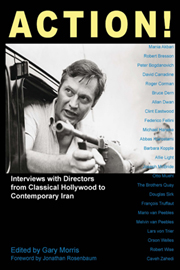Book contents
- Frontmatter
- Contents
- Foreword, by Jonathan Rosenbaum
- Editor's Preface
- Acknowledgements
- Introduction: The Art and Craft of Interviewing
- I Going Hollywood: Masters of Studio Style
- II Tickets to the Dark Side: Festival Favorites
- III Blows Against the Empire: Indie Godfathers
- IV Edgeplay: Avant-Garde Auteurs
- V Women in Revolt: Artist-Activists
- VI The Canon: Brilliance without Borders
- Contributor Biographies
Introduction: The Art and Craft of Interviewing
Published online by Cambridge University Press: 05 March 2012
- Frontmatter
- Contents
- Foreword, by Jonathan Rosenbaum
- Editor's Preface
- Acknowledgements
- Introduction: The Art and Craft of Interviewing
- I Going Hollywood: Masters of Studio Style
- II Tickets to the Dark Side: Festival Favorites
- III Blows Against the Empire: Indie Godfathers
- IV Edgeplay: Avant-Garde Auteurs
- V Women in Revolt: Artist-Activists
- VI The Canon: Brilliance without Borders
- Contributor Biographies
Summary
I don't consider myself a professional interviewer, so I'm not writing this introduction in order to give “how-to” advice to anyone. All of my interviews with film directors have been done because I wanted to do them; I didn't do them for money, certainly, and a number of them lay unpublished–indeed, untranscribed–for a couple of decades. I think the filmmakers in question appreciated my amateur status and may have trusted me all the more because of it. This is especially true of the late François Truffaut, who–as a former journalist himself–seemed charmed by the fact that I had traveled all the way to Paris, at my own expense, just to have a three- or four-hour conversation with him that might, or might not, appear in print.
When I call myself an amateur, of course I don't mean “unprofessional.” I thoroughly prepare myself for every interview by seeing all of a director's films at least once (DVDs have made this a lot less difficult than it used to be!) and reading everything about him and his work I can lay my hands on. I also prepare lists of “good questions,” even though I don't always stick to the list. The trick in an interview is to “read” your subject and figure out how to get the most (by which I mean the best) out of him–and that sometimes means asking a provocative and even inflammatory question that's not on your list.
- Type
- Chapter
- Information
- Action! , pp. xvii - xxiiPublisher: Anthem PressPrint publication year: 2009



